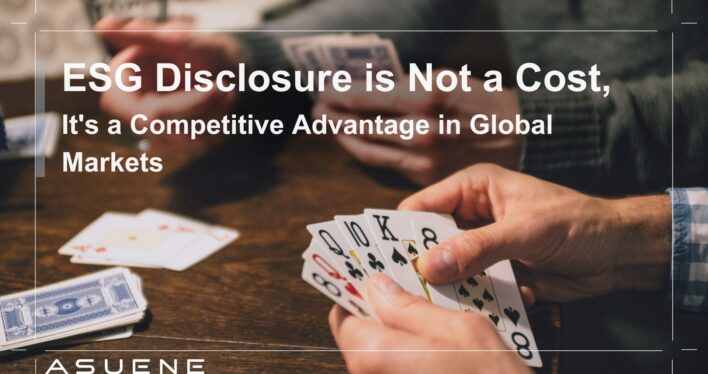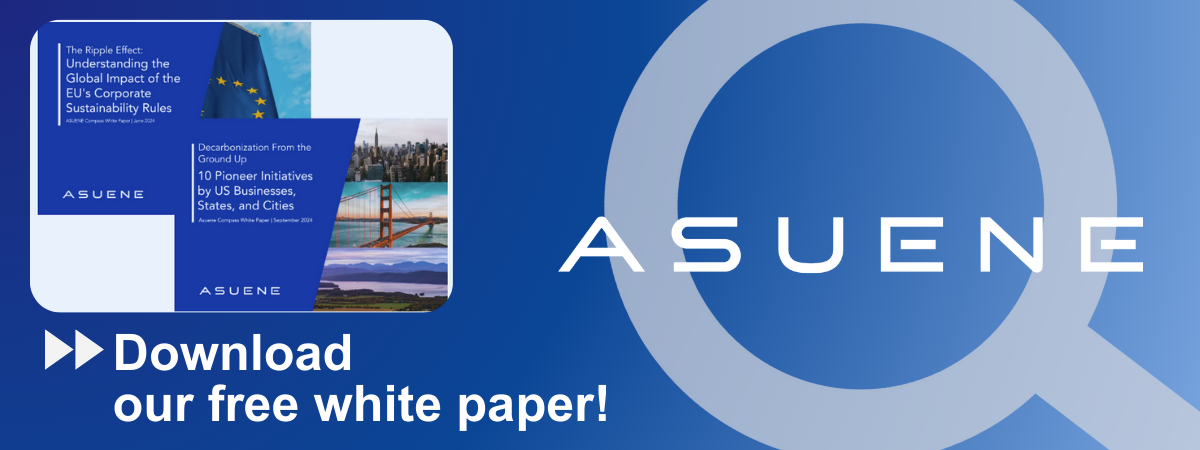- Article Summary
-
A Paradigm Shift in Corporate Value Creation
Environmental, Social, and Governance (ESG) disclosure has traditionally been viewed as a compliance cost—something companies do to satisfy regulators, investors, or ratings agencies. But in 2025 and beyond, ESG transparency is emerging as a key differentiator in global value chains.
From procurement decisions to capital access and reputational equity, robust ESG disclosure is reshaping how companies are evaluated and selected. This article explores how leading firms are leveraging ESG transparency to win business, attract investors, and gain long-term market relevance.

ESG as a Procurement Gatekeeper
Supplier Selection and Retention
- Global buyers increasingly demand verified ESG data from suppliers
- Companies without ESG disclosures are being excluded from RFQs and long-term supplier lists
Scope 3 Decarbonization Pressure
- Lead firms require upstream CO2 and lifecycle data from partners
- Those with transparent ESG practices are prioritized for low-carbon procurement programs
Example:
Aerospace and automotive OEMs now require ESG scorecards and third-party certifications from Tier 1 and Tier 2 suppliers as a condition for continued business.
ESG and Investor Confidence
Enhanced Access to Capital
- ESG-compliant firms receive better terms for green and sustainability-linked loans
- Asset managers are reallocating funds based on ESG metrics and climate risk disclosures
Risk Mitigation and Valuation Premiums
- Transparent ESG data improves credit ratings and investor confidence
- Studies show firms with strong ESG disclosures enjoy valuation premiums in capital markets
Example:
Moody’s and S&P Global now integrate ESG disclosures into credit scoring algorithms, rewarding firms with structured, assured ESG data.

ESG as a Catalyst for Reputation and Growth
Trust with B2B and B2C Stakeholders
- ESG transparency signals accountability and ethical leadership
- Enables stronger customer loyalty and brand differentiation
Regulatory Resilience
- Proactive disclosure mitigates compliance risks in evolving markets (e.g., CSRD, SEC, CBAM)
- Prepared companies respond faster to rule changes and reporting mandates
Example:
Tech companies publishing full carbon footprints and human capital metrics attract top talent, win public procurement contracts, and avoid regulatory delays.
What “Strategic ESG Disclosure” Looks Like
Characteristics:
- Forward-looking: Includes transition plans, targets, and scenario analysis
- Standardized: Aligns with CSRD, ISSB, GRI, and TCFD guidelines
- Verified: Backed by third-party assurance and audit trails
- Integrated: Connected to financial, risk, and procurement systems
Conclusion: From Obligation to Opportunity
In 2025 and beyond, ESG disclosure is no longer just a box to check—it’s a strategic capability that sets market leaders apart. Companies that embrace transparency as a business lever will gain preferred status in global procurement, earn investor trust, and shape the future of sustainable capitalism.
For organizations still viewing ESG as a cost, the time has come to reframe the narrative: ESG disclosure is not a burden. It is your license to operate—and your passport to grow.
Why Work with ASUENE Inc.?
Asuene is a key player in carbon accounting, offering a comprehensive platform that measures, reduces, and reports emissions, including Scope 1-3, with expertise in decarbonization. Asuene serves over 10,000 clients worldwide, providing an all-in-one solution that integrates GHG accounting, ESG supply chain management, a Carbon Credit exchange platform, and third-party verification.
ASUENE supports companies in achieving net-zero goals through advanced technology, consulting services, and an extensive network.


